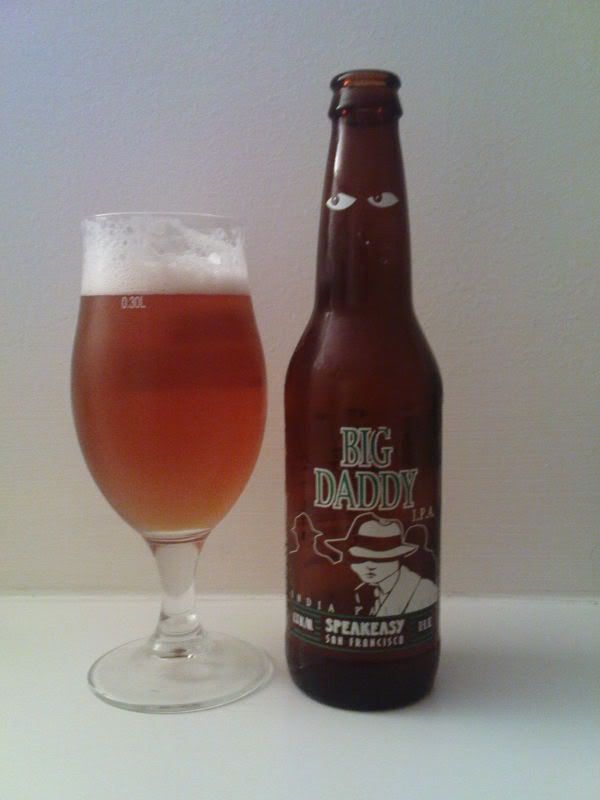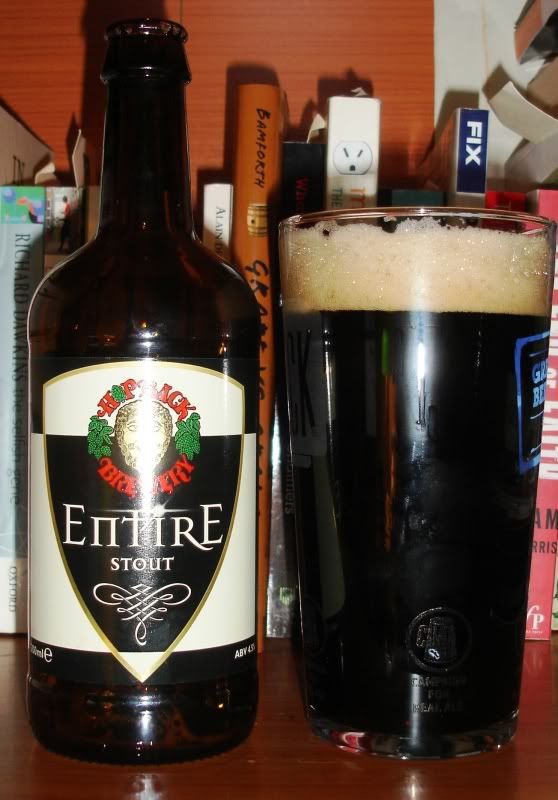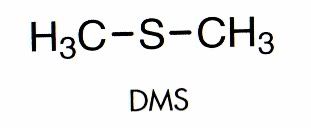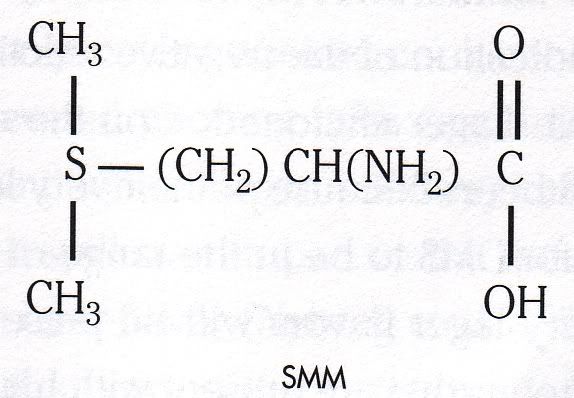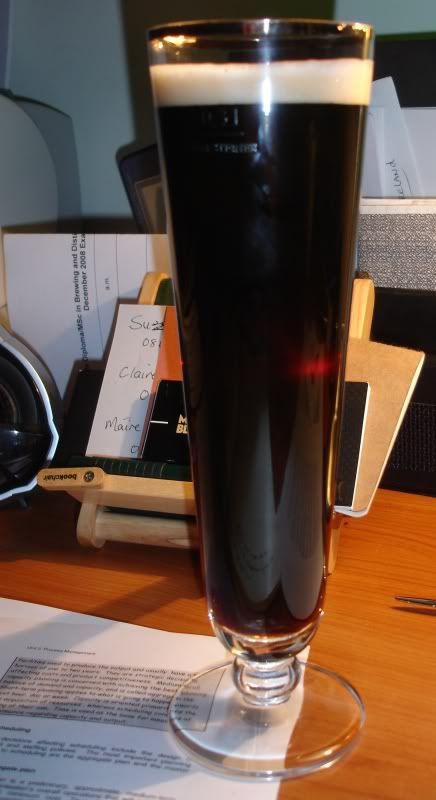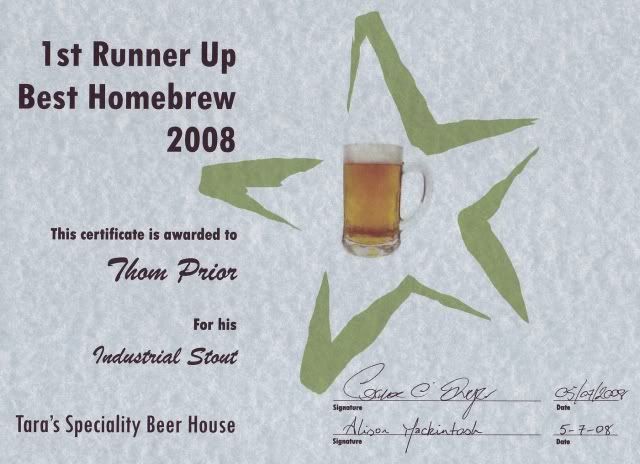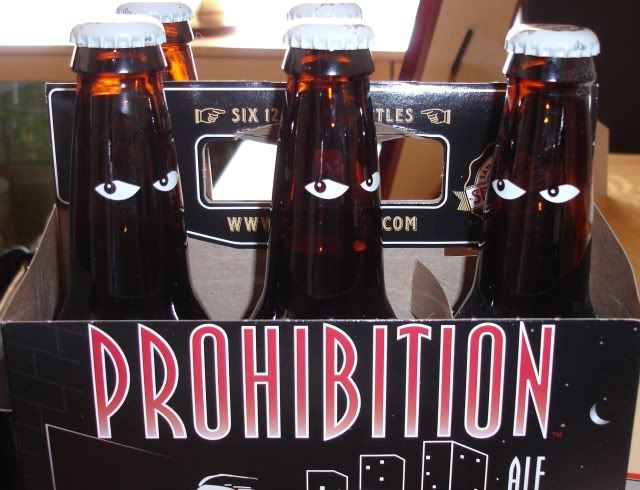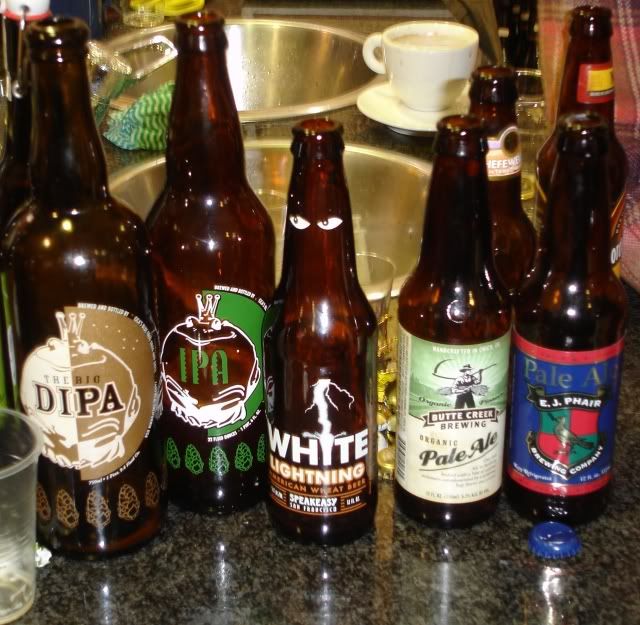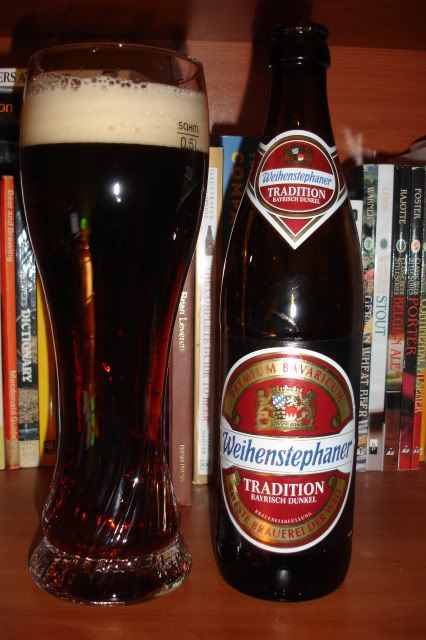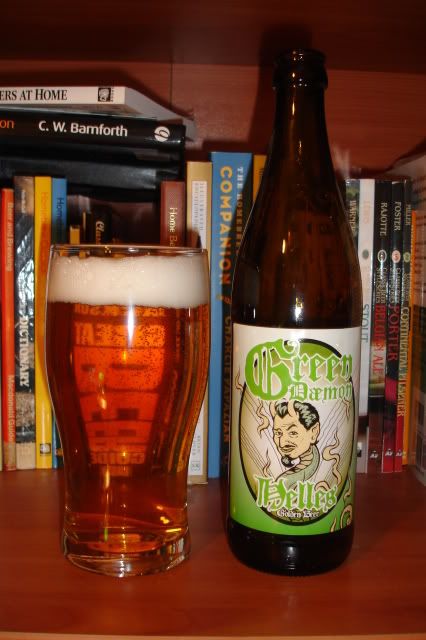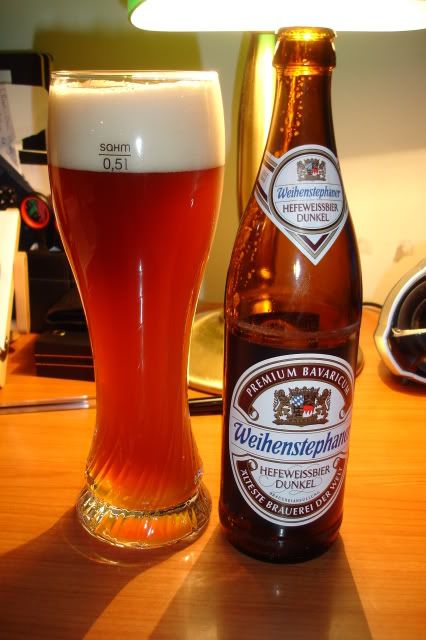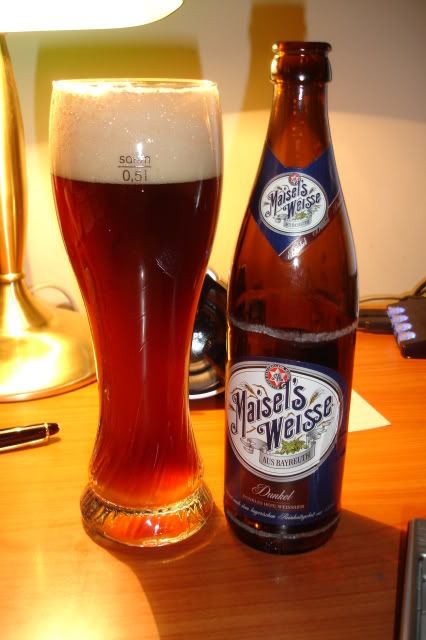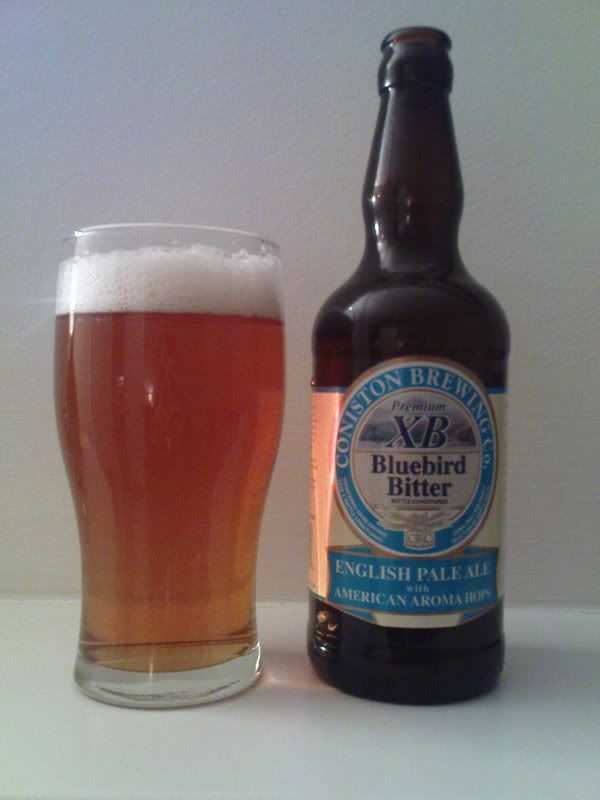 It is always fun delving into the lucky dip that is the CAMRA Beer Club quarterly delivery. I did well this time with XB Bluebird Bitter from the Coniston Brewing Co. It describes itself as an English pale ale with American aroma hops, but "not too much mind, or we might have an American pale ale on our hands". It need not worry about that, it has a bit to go before things stray into APA territory, but it is a tasty beer with distinct citrus hop notes in the American fashion but strange because it is carbonated like an English ale and the combination is a little unusual. The colour is very appealing, and a triumph of bottle conditioning in that it is very easy to pour without agitating the yeast sediment and has perfect condition.
It is always fun delving into the lucky dip that is the CAMRA Beer Club quarterly delivery. I did well this time with XB Bluebird Bitter from the Coniston Brewing Co. It describes itself as an English pale ale with American aroma hops, but "not too much mind, or we might have an American pale ale on our hands". It need not worry about that, it has a bit to go before things stray into APA territory, but it is a tasty beer with distinct citrus hop notes in the American fashion but strange because it is carbonated like an English ale and the combination is a little unusual. The colour is very appealing, and a triumph of bottle conditioning in that it is very easy to pour without agitating the yeast sediment and has perfect condition.Bottle conditioning is a tricky thing to do well. Brewers are given a number of options in the bottling of live beer and it's hard to know which is best. One question the brewer must address is how the yeast is to be provided with enough extract to condition the beer. One option is to halt the fermentation by cooling the wort before the yeast have used all the sugars. The beer can then be put into cask and bottles where the yeast continue to ferment the wort when things warm up and provide a degree of carbonation in the product. That's very bloody hard to judge, I imagine. Another option is to let the beer ferment out and then add some priming sugar to the bottling tank. This appeals to me as a home brewer because it is exactly what we do and works very effectively, but the volumes involved at the commercial scale might be impractical. Also, there are specific bacteria that just love priming sugar and ruin beer. Another appealing option is to add a measure of freshly fermenting beer to the bottling tank. Termed 'krausening' this has the double benefit of supplying extract for conditioning and also an infusion of fresh yeast that will carbonate the beer in peak condition, but again could prove difficult because the primary fermentation of one batch must be carried out with the bottling of another batch in mind.
Yeast counts are also a problem because too much yeast in the bottle will either give a sludge of dead yeast in the bottom of the bottle or a yeast layer that lifts too easily and fogs up the pint. Some brewers opt to reduce the yeast content to half a million cells per millilitre by cooling the beer in the fermenter thereby encouraging most of the yeast to drop out of the beer. Others roughly filter the beer to remove all the yeast, but leave the tastier components, and then re-introduce a specific amount of yeast to take care of things in the bottle. The yeast count in the bottle must be sufficient to allow conditioning of the beer within a few weeks and also enough to produce a thin uniform film over the bottom of the bottle preventing slippage of the sediment, providing ease of pour.
There is no doubt that it is easier, if a little more expensive, to run your beer through a fine filter to stabilise it and not worry about all these complex considerations, but I am glad that a great many brewers in Britain have persevered with this tricky business to provide us with live, flavourful beers.
